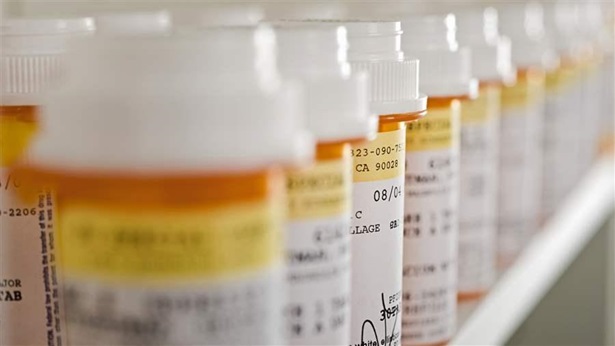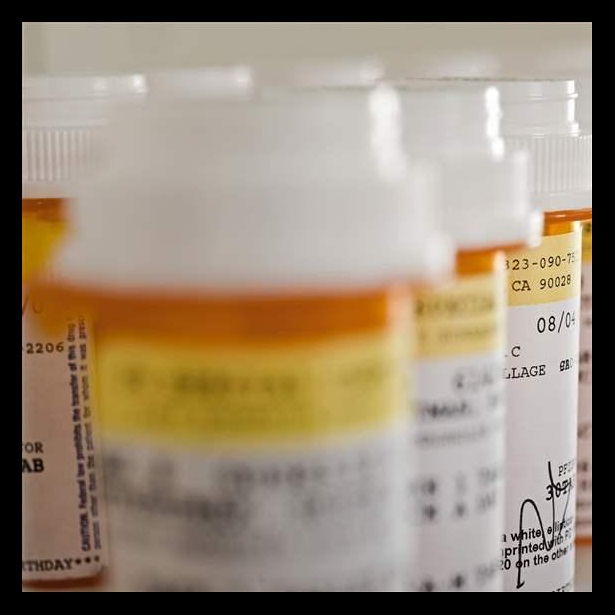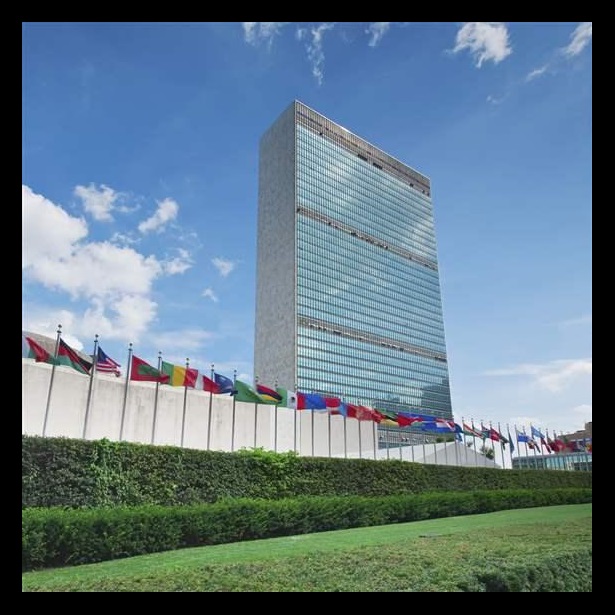Are You Superbug Smart?
Test your antibiotic resistance knowledge
Both troubling and promising headlines about antibiotic resistance have dominated the news over the past year. Are you well-versed on this rapidly evolving public health threat? Take this quiz to find out.
# testmode:no
# quiz: randomChoices,instantClosed
# incomplete test text : Please answer all questions to show results
# submit Button Text : Show Results
# results Title Text : Your score: {score} out of {total_questions}
# results Text : (!a href="http://www.pewtrusts.org/en/multimedia/video/2016/why-cant-we-find-new-antibiotics" target="_blank" !) (!img src="{_imgurl}results_image.jpg"!) (!/a!) Thank you for taking the quiz.
Watch:
(!a href="http://www.pewtrusts.org/en/multimedia/video/2016/why-cant-we-find-new-antibiotics" target="_blank" !)Why Can’t We Find New Antibiotics?(!/a!) # social Url : http://pew.org/2fmLoIM # social Text: Your score: {score} out of {total_questions}. Are you superbug smart? # _imgurl : /~/media/data-visualizations/interactives/2016/antibioticsquiz/assets/ ?1 Why are scientists so alarmed by a new type of antibiotic resistance called mcr-1 that was recently found in the U.S. and in dozens of other countries around the world? Because it: (!img src="{_imgurl}Figure_1.jpg" !) - Makes bacteria resistant to colistin, an antibiotic of last resort. - Is easily transferable to different kinds of bacteria. - Has the potential to create a new variety of superbug that is resistant to all available antibiotics. + All of the above. ! Mcr-1 is a recently discovered gene that makes bacteria resistant to colistin, one of the few medications that doctors rely on to fight serious and life-threatening infections resistant to other treatment options. The most troubling characteristic of mcr-1 is its ease in moving from one bacterium to another, spreading colistin resistance to a wide variety of bacterial species. ?2 According to a recent World Bank report, by 2050 drug-resistant infections could cause global economic damage on par with:(!img src="{_imgurl}Figure_2.jpg" !) - The Great Depression. + The financial crisis of 2008. ! In addition to comparing the economic damage from drug-resistant infections to the 2008 financial crisis, the World Bank report also looked at the negative effects that resistant infections could have on gross domestic product, global poverty, world trade, health care costs, and livestock production. - The eruption of Mount St. Helens. - The bankruptcy of a small country. ?3 What type of antibiotic use in food animals will become illegal in the United States on Jan. 1, 2017? (!img src="{_imgurl}Figure_3.jpg" !) + Growth promotion. ! Beginning Jan. 1, 2017, Food and Drug Administration policy known as Guidance for Industry #213 will eliminate the use of medically important antibiotics for growth promotion purposes and require veterinary oversight when these drugs are added to feed and water. - Disease prevention during times of stress. - Prevention or control of early mortality. - None of the above. ?4 What percentage of antibiotic use is unnecessary in doctors' offices, emergency rooms, and hospital-based clinics across the U.S.?(!img src="{_imgurl}Figure_4.jpg" !) - Zero percent. + 30 percent. ! At least 30 percent of U.S. outpatient antibiotic prescriptions are unnecessary; the majority of that prescribing is for acute respiratory conditions such as colds, sore throats, bronchitis, the flu, and other viral illnesses. - 75 percent. - 95 percent. ?5 Which major global organization signed an unprecedented declaration to tackle antibiotic resistance?(!img src="{_imgurl}Figure_5.jpg" !) - Doctors Without Borders. - Save the Children. - American Red Cross. + United Nations. ! This marks only the fourth time in U.N. history that a health issue was discussed at the General Assembly. ?6 If action is not taken, about how many people around the world could die each year due to antimicrobial resistance by 2050, according to a U.K. report? (!img src="{_imgurl}Figure_6.jpg" !) - 100,000. - 1 million. + 10 million. ! If action isn't taken, an extra 10 million people a year worldwide could succumb to drug-resistant infections, according to a report from the U.K.'s Review on Antimicrobial Resistance. This number is more than currently die from cancer. - 350 million. ?7 Nearly every antibiotic available today is based on discoveries made no later than what year?(!img src="{_imgurl}Figure_7.jpg" !) - 2010. + 1984. ! Nearly all antibiotics brought to market over the past 30 years have been variations on existing drugs discovered between the 1900s and 1980s. - 1970. - 1942. ?8 How many estimated cases of gonorrhea occur in the U.S. each year? (!img src="{_imgurl}Figure_8.jpg" !) - 100,000. - 350,000. + 820,000. ! According to a 2013 report from the Centers for Disease Control and Prevention, an estimated 820,000 cases of gonorrhea occur in the U.S. each year. About 246,000 of these are drug-resistant; as of March 2016, just three antibiotics were in development to treat these infections. - 1.5 million.
Watch:
(!a href="http://www.pewtrusts.org/en/multimedia/video/2016/why-cant-we-find-new-antibiotics" target="_blank" !)Why Can’t We Find New Antibiotics?(!/a!) # social Url : http://pew.org/2fmLoIM # social Text: Your score: {score} out of {total_questions}. Are you superbug smart? # _imgurl : /~/media/data-visualizations/interactives/2016/antibioticsquiz/assets/ ?1 Why are scientists so alarmed by a new type of antibiotic resistance called mcr-1 that was recently found in the U.S. and in dozens of other countries around the world? Because it: (!img src="{_imgurl}Figure_1.jpg" !) - Makes bacteria resistant to colistin, an antibiotic of last resort. - Is easily transferable to different kinds of bacteria. - Has the potential to create a new variety of superbug that is resistant to all available antibiotics. + All of the above. ! Mcr-1 is a recently discovered gene that makes bacteria resistant to colistin, one of the few medications that doctors rely on to fight serious and life-threatening infections resistant to other treatment options. The most troubling characteristic of mcr-1 is its ease in moving from one bacterium to another, spreading colistin resistance to a wide variety of bacterial species. ?2 According to a recent World Bank report, by 2050 drug-resistant infections could cause global economic damage on par with:(!img src="{_imgurl}Figure_2.jpg" !) - The Great Depression. + The financial crisis of 2008. ! In addition to comparing the economic damage from drug-resistant infections to the 2008 financial crisis, the World Bank report also looked at the negative effects that resistant infections could have on gross domestic product, global poverty, world trade, health care costs, and livestock production. - The eruption of Mount St. Helens. - The bankruptcy of a small country. ?3 What type of antibiotic use in food animals will become illegal in the United States on Jan. 1, 2017? (!img src="{_imgurl}Figure_3.jpg" !) + Growth promotion. ! Beginning Jan. 1, 2017, Food and Drug Administration policy known as Guidance for Industry #213 will eliminate the use of medically important antibiotics for growth promotion purposes and require veterinary oversight when these drugs are added to feed and water. - Disease prevention during times of stress. - Prevention or control of early mortality. - None of the above. ?4 What percentage of antibiotic use is unnecessary in doctors' offices, emergency rooms, and hospital-based clinics across the U.S.?(!img src="{_imgurl}Figure_4.jpg" !) - Zero percent. + 30 percent. ! At least 30 percent of U.S. outpatient antibiotic prescriptions are unnecessary; the majority of that prescribing is for acute respiratory conditions such as colds, sore throats, bronchitis, the flu, and other viral illnesses. - 75 percent. - 95 percent. ?5 Which major global organization signed an unprecedented declaration to tackle antibiotic resistance?(!img src="{_imgurl}Figure_5.jpg" !) - Doctors Without Borders. - Save the Children. - American Red Cross. + United Nations. ! This marks only the fourth time in U.N. history that a health issue was discussed at the General Assembly. ?6 If action is not taken, about how many people around the world could die each year due to antimicrobial resistance by 2050, according to a U.K. report? (!img src="{_imgurl}Figure_6.jpg" !) - 100,000. - 1 million. + 10 million. ! If action isn't taken, an extra 10 million people a year worldwide could succumb to drug-resistant infections, according to a report from the U.K.'s Review on Antimicrobial Resistance. This number is more than currently die from cancer. - 350 million. ?7 Nearly every antibiotic available today is based on discoveries made no later than what year?(!img src="{_imgurl}Figure_7.jpg" !) - 2010. + 1984. ! Nearly all antibiotics brought to market over the past 30 years have been variations on existing drugs discovered between the 1900s and 1980s. - 1970. - 1942. ?8 How many estimated cases of gonorrhea occur in the U.S. each year? (!img src="{_imgurl}Figure_8.jpg" !) - 100,000. - 350,000. + 820,000. ! According to a 2013 report from the Centers for Disease Control and Prevention, an estimated 820,000 cases of gonorrhea occur in the U.S. each year. About 246,000 of these are drug-resistant; as of March 2016, just three antibiotics were in development to treat these infections. - 1.5 million.


America’s Overdose Crisis
Sign up for our five-email course explaining the overdose crisis in America, the state of treatment access, and ways to improve care
Sign up

Data Visualization
November 15, 2015
Outpatient Antibiotic Use in the United States


Article
October 12, 2016
Global Pledge to Fight Antimicrobial Resistance
Stakeholders must now build on international momentum, ensure action










